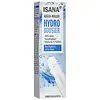What's inside
What's inside
 Key Ingredients
Key Ingredients

 Benefits
Benefits

 Concerns
Concerns

 Ingredients Side-by-side
Ingredients Side-by-side

Water
Skin ConditioningButylene Glycol
HumectantSorbitol
HumectantBetaine
HumectantPanthenol
Skin ConditioningGlycerin
HumectantUrea
BufferingCaffeine
Skin ConditioningEscin
TonicSerine
MaskingSodium Hyaluronate
HumectantRuscus Aculeatus Root Extract
AstringentBiosaccharide Gum-1
HumectantCentella Asiatica Leaf Extract
Skin ConditioningAlgin
MaskingPullulan
Calendula Officinalis Flower Extract
MaskingPhenoxyethanol
PreservativeGlyceryl Polyacrylate
Trehalose
HumectantCarbomer
Emulsion StabilisingEthylhexylglycerin
Skin ConditioningPentylene Glycol
Skin ConditioningAmmonium Glycyrrhizate
MaskingSodium Hydroxide
BufferingCaprylyl Glycol
EmollientDisodium Phosphate
BufferingHydrolyzed Yeast Protein
Skin ConditioningSodium Citrate
BufferingPantolactone
HumectantPotassium Phosphate
BufferingCitric Acid
BufferingWater, Butylene Glycol, Sorbitol, Betaine, Panthenol, Glycerin, Urea, Caffeine, Escin, Serine, Sodium Hyaluronate, Ruscus Aculeatus Root Extract, Biosaccharide Gum-1, Centella Asiatica Leaf Extract, Algin, Pullulan, Calendula Officinalis Flower Extract, Phenoxyethanol, Glyceryl Polyacrylate, Trehalose, Carbomer, Ethylhexylglycerin, Pentylene Glycol, Ammonium Glycyrrhizate, Sodium Hydroxide, Caprylyl Glycol, Disodium Phosphate, Hydrolyzed Yeast Protein, Sodium Citrate, Pantolactone, Potassium Phosphate, Citric Acid
 Reviews
Reviews

Ingredients Explained
These ingredients are found in both products.
Ingredients higher up in an ingredient list are typically present in a larger amount.
Butylene Glycol (or BG) is used within cosmetic products for a few different reasons:
Overall, Butylene Glycol is a safe and well-rounded ingredient that works well with other ingredients.
Though this ingredient works well with most skin types, some people with sensitive skin may experience a reaction such as allergic rashes, closed comedones, or itchiness.
Learn more about Butylene GlycolCarbomer is a polymer of acrylic acid. Its main role is to create a gel consistency.
A high amount of carbomer can cause pilling or balling up of products. Don't worry, most products contain 1% or less of carbomer.
Glycerin is already naturally found in your skin. It helps moisturize and protect your skin.
A study from 2016 found glycerin to be more effective as a humectant than AHAs and hyaluronic acid.
As a humectant, it helps the skin stay hydrated by pulling moisture to your skin. The low molecular weight of glycerin allows it to pull moisture into the deeper layers of your skin.
Hydrated skin improves your skin barrier; Your skin barrier helps protect against irritants and bacteria.
Glycerin has also been found to have antimicrobial and antiviral properties. Due to these properties, glycerin is often used in wound and burn treatments.
In cosmetics, glycerin is usually derived from plants such as soybean or palm. However, it can also be sourced from animals, such as tallow or animal fat.
This ingredient is organic, colorless, odorless, and non-toxic.
Glycerin is the name for this ingredient in American English. British English uses Glycerol/Glycerine.
Learn more about GlycerinPhenoxyethanol is a preservative that has germicide, antimicrobial, and aromatic properties. Studies show that phenoxyethanol can prevent microbial growth. By itself, it has a scent that is similar to that of a rose.
It's often used in formulations along with Caprylyl Glycol to preserve the shelf life of products.
Sodium Citrate is the sodium salts of citric acid. In skincare, it is used to alter pH levels and acts as a preservative.
Its main functions are to maintain the pH of a product and neutralize metal ions.
The acidity of our skin is maintained by our glands and skin biome; normal pH level of skin is slightly acidic (~4.75-5.5).
Being slightly acidic allows our skin to create an "acid mantle". This acid mantle is a thin barrier that protects our skin from bacteria and contaminants.
Learn more about Sodium CitrateSodium Hyaluronate is hyaluronic acid's salt form. It is commonly derived from the sodium salt of hyaluronic acid.
Like hyaluronic acid, it is great at holding water and acts as a humectant. This makes it a great skin hydrating ingredient.
Sodium Hyaluronate is naturally occurring in our bodies and is mostly found in eye fluid and joints.
These are some other common types of Hyaluronic Acid:
Learn more about Sodium HyaluronateWater. It's the most common cosmetic ingredient of all. You'll usually see it at the top of ingredient lists, meaning that it makes up the largest part of the product.
So why is it so popular? Water most often acts as a solvent - this means that it helps dissolve other ingredients into the formulation.
You'll also recognize water as that liquid we all need to stay alive. If you see this, drink a glass of water. Stay hydrated!
Learn more about Water